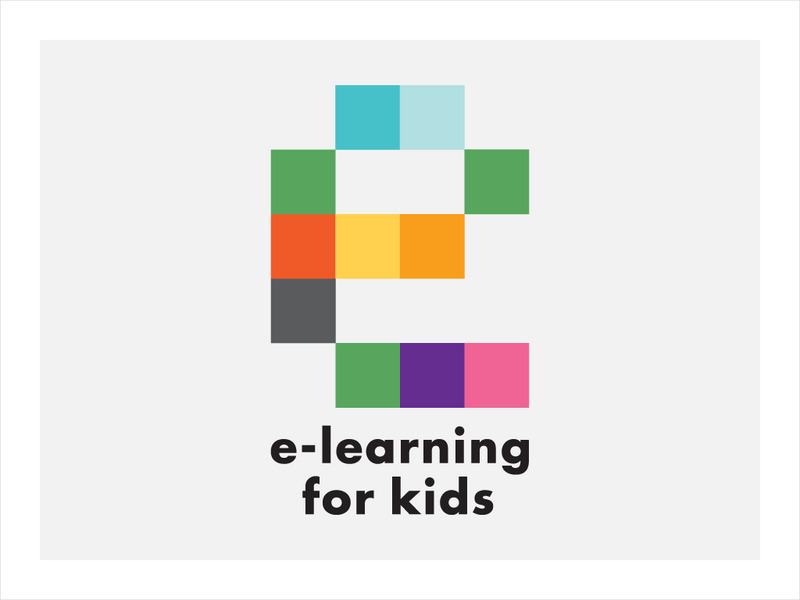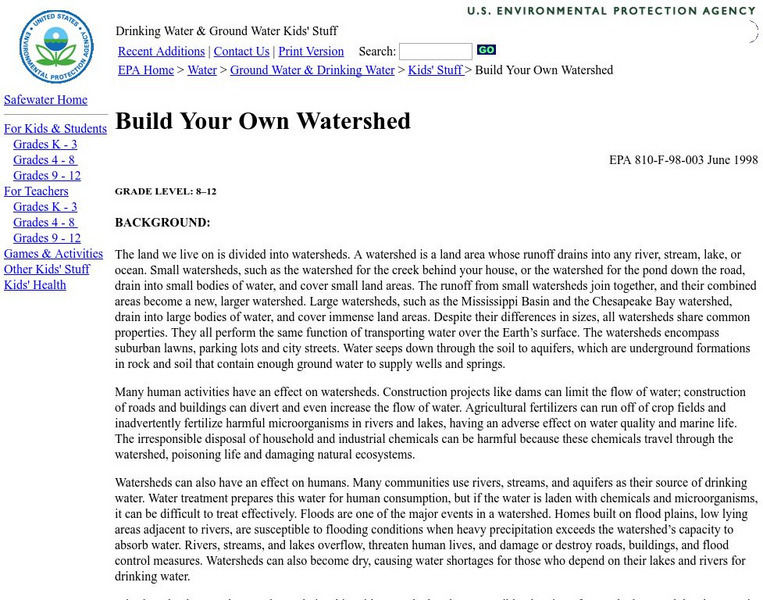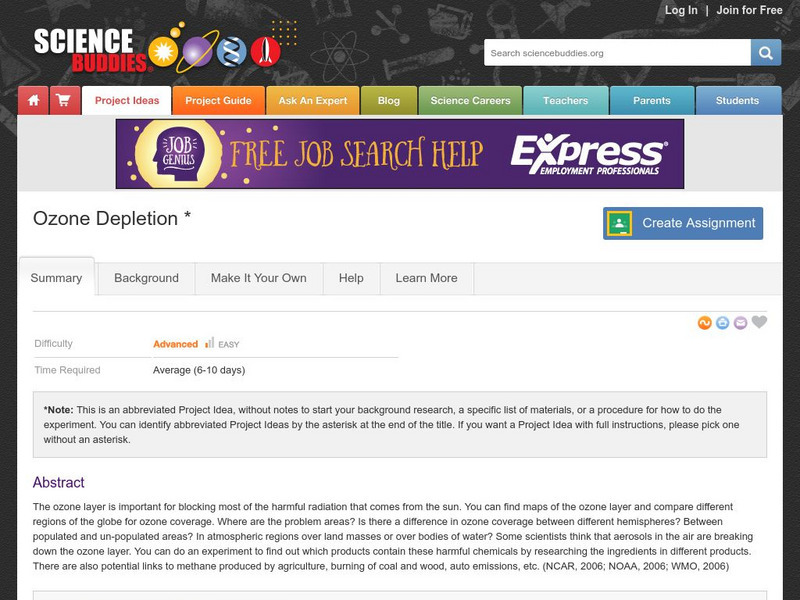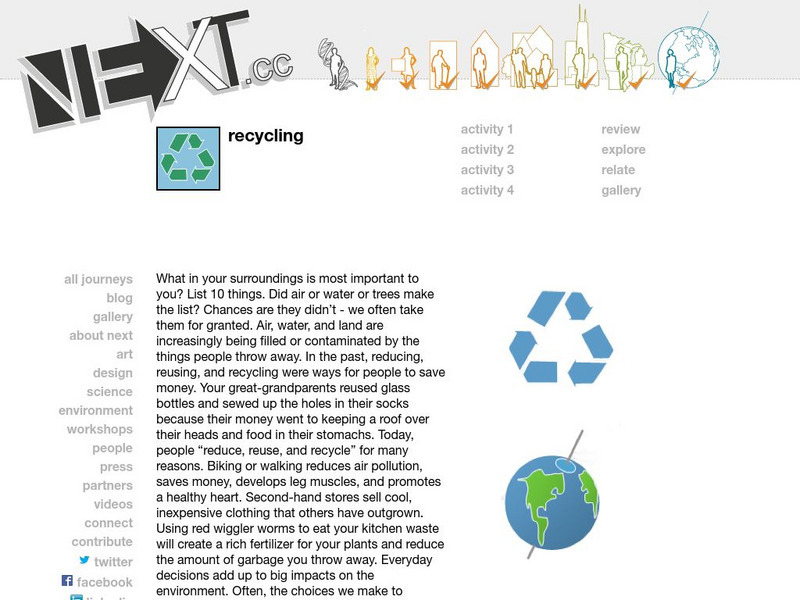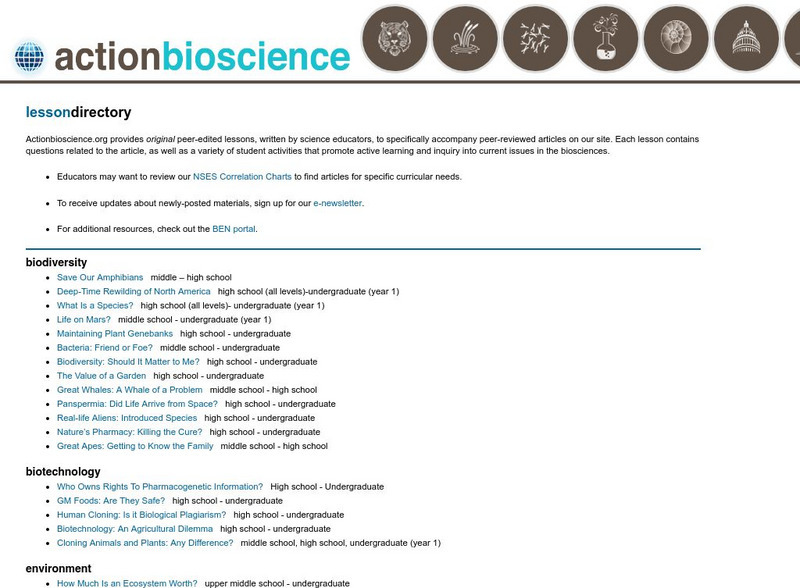Library of Congress
Loc: Explorations in American Environmental History
These lessons introduce students to historical perspectives of nature and the environment, drawing on the American Memory collections, other digital resources, readings, and writing exercises. Students examine materials in a variety of...
E-learning for Kids
E Learning for Kids: Science: Pacific Ocean: Mexico: Why Must We Care for the Environment?
Join Mateo on his trip to Mexico. During his trip, he will teach all about conservation, and contributing to a healthy environment.
E-learning for Kids
E Learning for Kids: Science: Nova Zembla Expedition: How Are Different Organisms Suited to Their Habitats?
Alex and Foxy White are walking around looking at animals and learning about their habitats. Join them on their expedition.
Scholastic
Scholastic: Endangered Ecosystems: Build a Food Web
Investigate some animals and see where they are in the food web. Build your own food web and relate it to the endangered species biomes.
Scholastic
Scholastic: Endangered Ecosystems: Build Your Own Caterpillar
As you build your own caterpillar, make sure it has everything it needs for its survival. Learn how characteristics, like color, spines, and glands, can help protect the caterpillar.
US Department of Labor
Bureau of Labor Statistics: Biological and Medical Scientists
Description of the career of biological scientist, including ecologist, with links to education, outlook, wages, and job outlook information.
Scholastic
Scholastic:magic School Bus Themes Index
Magic School Bus cross referenced by themes to provide quick access to many activities and references.
NC State University
Nc State University: Natural Resources Research Information
This comprehensive research guide is designed for students or those interested in the ecology, agriculture, or forestry of the world.
University of Oregon
Magnet Lab: University of Oregon Virtual Laboratory
The collection of interactive physics applets offered by the University of Oregon is an excellent resource for students. The applets are grouped in broad subject areas including astrophysics, energy and environment, mechanics and...
Environmental Education for Kids
Eek!: Nature's Recyclers Coloring Book
Did you know that nature has its own clean-up crew and recycling staff? Yeah, there aremany plants and animals that help recycle natural materials in our environment. They take deadmaterials and turn them back into rich soil. Use this...
Environmental Education for Kids
Eek!: Evergreens
Site chronicles Wisconsin's Evergreen and Conifer trees. There are descriptions of the various tree types. Additionally, site details the uses of these trees in nature. Ideal for grades 4-8.
US Environmental Protection Agency
Epa: Build Your Own Watershed
How can you learn to build your own watershed? This site features an activity to illustrate the basic properties of a watershed. Don't miss out.
US Environmental Protection Agency
Epa: Secret of Bog Creek
This site has a user guided story about a bog that has been a secret dumping ground for waste.
US Environmental Protection Agency
Epa: A Kids Adventure Story
This cartoon describes what the EPA's Superfund is and how water can become polluted. A lab experiment with Q&A is included.
University of California
Earth and Planetary Science: Procedure for Evaluating Environmental Impact [Pdf]
A useful guide for environmental impact reporting and as a systematic reference.
Science Buddies
Science Buddies: Ozone Depletion
The ozone layer is important for blocking most of the harmful radiation that comes from the sun. You can find maps of the ozone layer and compare different regions of the globe for ozone coverage. Some scientists think that aerosols in...
Next.cc
Next: Recycling
Multiple activities explore and explain the importance of reducing, reusing, and recycling. Click on one of the links provided for further information.
Science Education Resource Center at Carleton College
Serc: Interdependence of Life: How an Ecosystem Responds to Change
In this biology field investigation, learners will investigate the site of an environmental disturbance, identify plant and animal life within that specific area, and compare it to an adjoining forested area. Students will map both areas...
Science Education Resource Center at Carleton College
Serc: Habitat Loss Game
In this role playing game, students become members of a forest ecosystem to illustrate the challenges facing endangered species, the environment, and economic interests.
Woods Hole Oceanographic Institution
Polar Discovery: Compare the Poles: Ice
A comparison of the features of ice in the Arctic and the Antarctic. Looks at glaciers, icebergs, pack ice, and multi-year ice.
Science Education Resource Center at Carleton College
Serc: Principles, Structure, & Implementation of International Environmental Law
This module introduces the fundamental norms and institutions that comprise international environmental law and then focuses on six specific topics: air pollution and protection of the atmosphere, hazardous waste, endangered species,...
TryEngineering
Try Engineering: Irrigation Ideas
The focus of this civil engineering activity is on designing, building, and testing an irrigation system made from everyday materials to move water from one place to another.
National Institute of Educational Technologies and Teacher Training (Spain)
Ministerio De Educacion: La Accion Humana en Los Ecosistemas.
Throughout this unit, you will see how man change and affects the environment in which they live. You will have a better understanding of our need of matter and energy and the consequences of their use and abuse. It contains 19...
American Institute of Biological Sciences
Action Bioscience: Lesson Directory
Peer-edited, educator written science lessons on current bioscience issues. Each lesson correlates to a peer-reviewed article on that topic, and contains questions about the article and a variety of engaging activities for students.



